The Merovingian kingdoms were arguably the most important polities to emerge after the collapse of the Western Roman Empire, blending Gallo-Roman art and culture with Germanic Frankish customs. In a new landmark exhibition at the Musée de Cluny in Paris, France — Merovingian Times: Three Centuries of Art and Culture — the grandeur, power, and artistic brilliance of the Merovingian rulers and their subjects is unmasked and reassessed. In this exclusive English language interview James Blake Wiener of Ancient History Encyclopedia (AHE) speaks to Isabelle Bardiès-Fronty, Chief Conservator at the Musée de Cluny, about the exhibition as well as the legacy of the Merovingians in France.
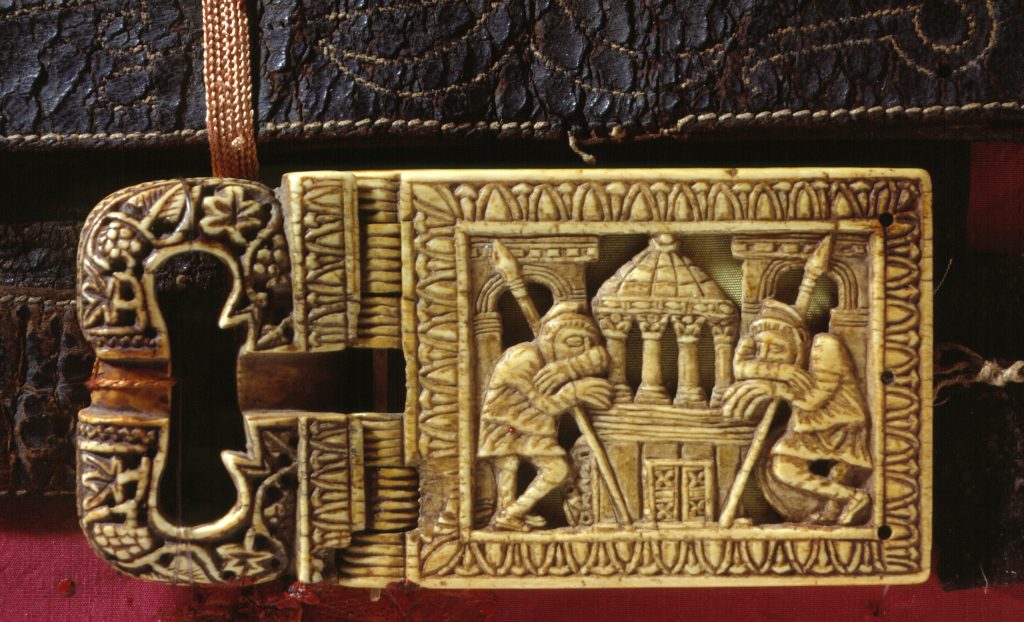
Boucle de saint Césaire. 1ère moitié du VIe siècle. Ivoire d’éléphant. Hauteur: 5 cm. Conservé au musée Arles antique. ©Ville d’Arles / Photo M. Lacanaud.
JW: Mme. Isabelle Bardiès-Fronty, thank you for speaking with me on behalf of Ancient History Encyclopedia. It is a pleasure to ask you questions about this grand show in Paris as your museum is among my absolute favorites in the world.
The Merovingian epoch was marked by dynamism and change, but how are the Merovingians remembered chiefly in France? Do the French have many misconceptions of their rule or courtly culture?
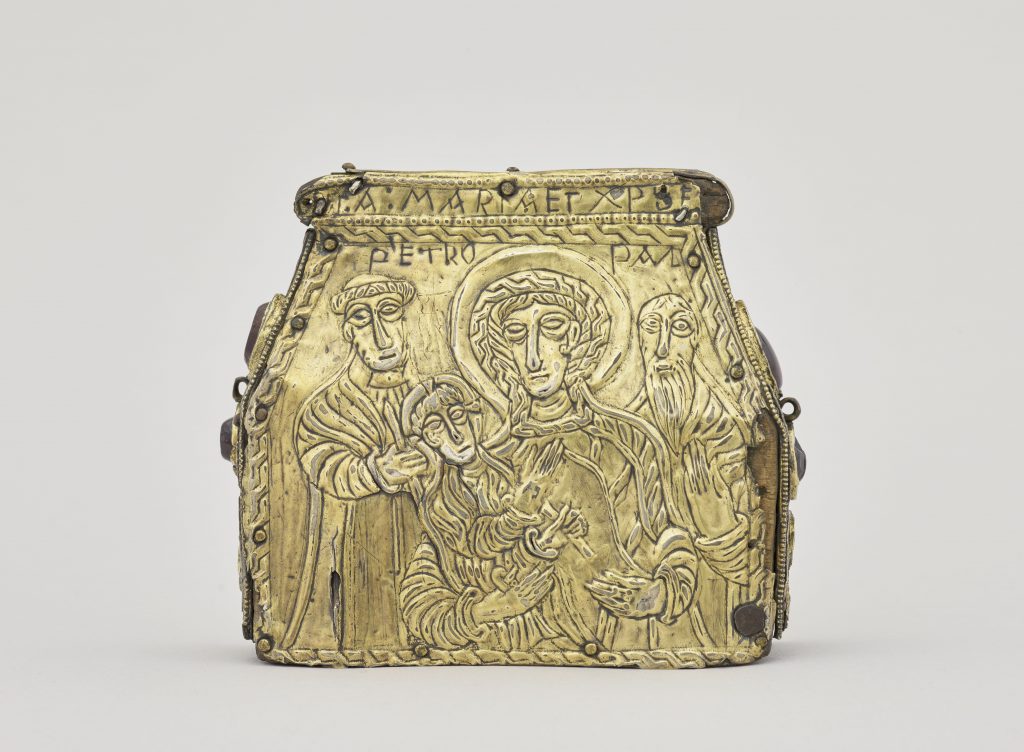
Châsse-reliquaire. Vierge à l’Enfant 1ère moitié du VIIIe siècle. Argent, grenats, verroterie, bois et cuivre. Hauteur: 8,2 cm. Longueur: 9,2 cm. Largeur: 2,9 cm. ©Rmn-Grand Palais (musée de Cluny – musée national du Moyen Âge) / Michel Urtado.
IBF: Many misconceptions about kings of the Merovingian period still exist in France mainly due to the conception of the period by historians of nineteenth century. One of popular belief is the idea of a total destruction of Roman methods of governance and power…We show some manuscripts of laws from the beginning of the Middle Ages in the exhibition, which are directly connected to the Theodosian Code (This survived and endured well into the Merovingian era; we even have an example from Lyon displayed in the exhibition.)
JW: Why did the Musée de Cluny undertake an exhibition about the Merovingians? Was this something the museum had wanted to accomplish? If so, why?
IBF: Musée de Cluny is the national museum of Middle Ages in France, and its collection is one of the finest of the world for the art of this period. For this reason, it is the place to be when one wishes to encounter art from the beginning of the Middle Ages and specifically, Merovingian art in Paris. Because of the closing of the Cabinet des Médailles in Bibliothèque nationale de France for renovation, our exhibition has many prestigious loans this winter. We were quite lucky in this sense as the timing was perfect!
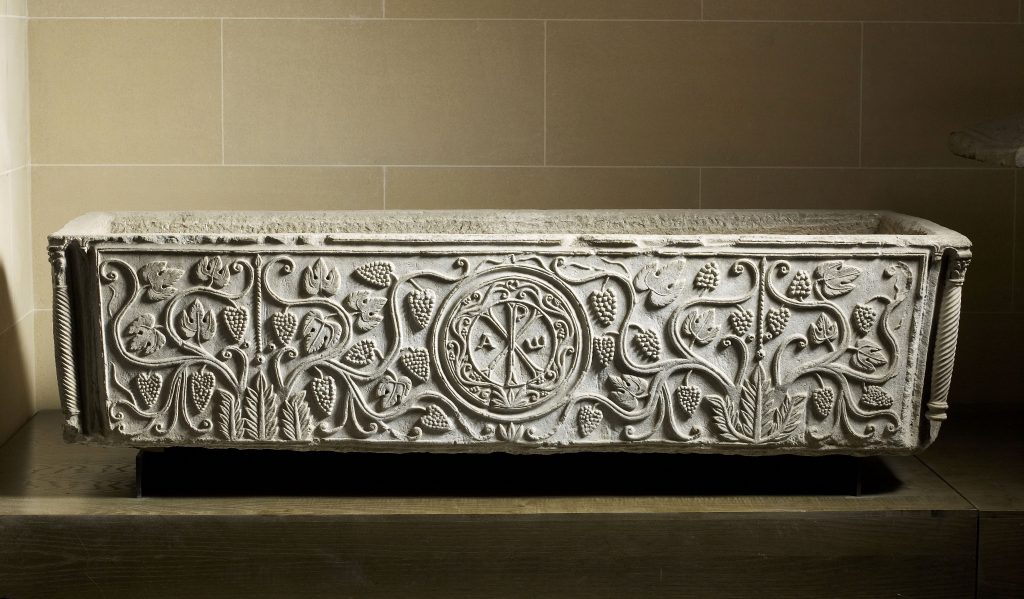
Sarcophage de saint Drausin. VIe siècle Marbre Hauteur: 52 cm. Longueur: 213 cm. Largeur: 67 cm. ©Musée du Louvre, dist. Rmn-Grand Palais / Thierry Ollivier.
JW: On show are precious illuminated manuscripts, the throne of Dagobert I (r. 629-634 CE), rare pieces of silverware, and other beautiful treasures, which are seldom on public display for reasons of preservation. The profound originality in the artistic production of the Merovingians, and the wealth of materials and colors are astonishing even today.
What do you think museum visitors should pay attention to as they explore the exhibition? What surprises await them in Paris?
IBF: Your very nice description of the beauty of the masterpieces in the exhibition is exactly what seems to be “amazing” to our visitors: A lot of them are really impressed by the luxury of the pieces displayed. Another comment that I have received several times is the fact that the exhibition allows for visitors to discover a certain “Merovingian aesthetic” thanks to the meeting of several artistic techniques. Some treasures within the exhibition are particularly fascinating for the visitors like the tunic of Queen Bathilde (c. 626-680 CE) with its impressive silk and gold embroidery.

Croix votive du trésor de Guarrazar. Millieu du VIIe siècle. Or, saphirs, émeraudes, améthystes, cristaux de roche, perles, nacre et jaspe. Hauteur : 18,5 cm. Largeur : 10,8 cm ©Rmn-Grand Palais (musée de Cluny – musée national du Moyen Âge) / Michel Urtado.
JW: Would you say that the Merovingians bridge the gap between the world of the Romans and the Middle Ages? In which ways do they exemplify a radical transition of culture and politics in addition to cultural continuity? Periodization certainly is the bane of all historians, correct?
IBF: Merovingians are in the Middle Ages, James! They indeed bridge the gap between the end of the Roman world and the dawn of the Carolingian epoch. The Merovingian civilization is fascinating by virtue of the cultural syncretism taking place in all spheres: Religion, politics, philosophy, and art. As an example, visitors to our exhibition can discover some manuscripts with text by Isidore de Seville (560-636 CE) and illuminations in the three colors of Merovingian painting: Green, yellow, and ochre.
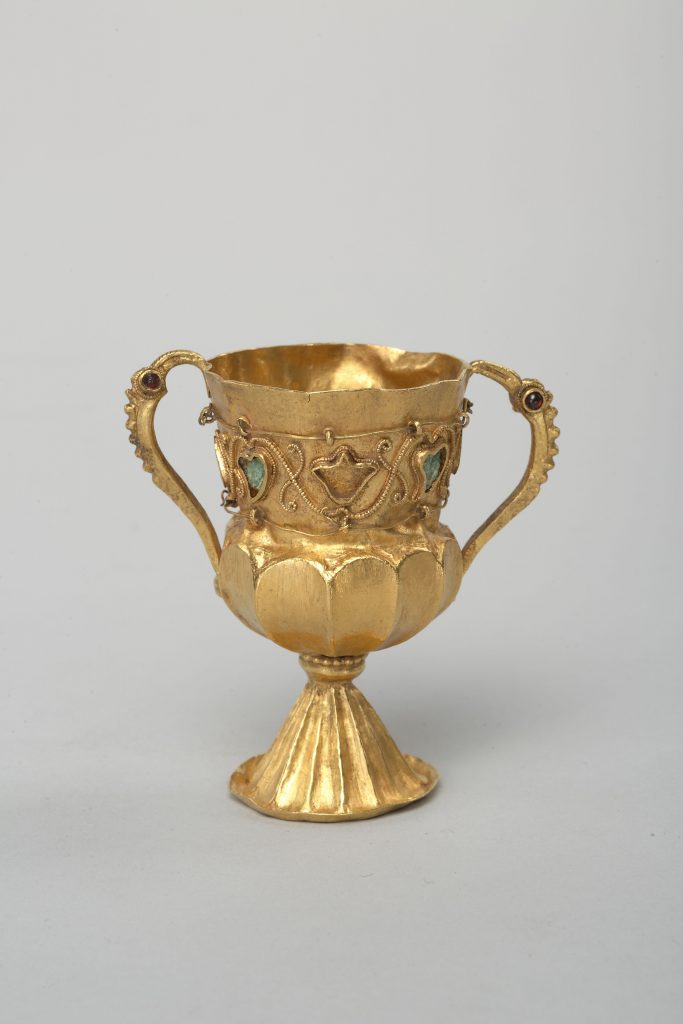
Calice de Gourdon. 2e moitié du Ve siècle. Or et grenats. Hauteur : 7,4 cm. Diamètre : 4,4 cm. ©Bibliothèque nationale de France, Paris.
JW: What do you think is the Merovingian legacy in French law and the politics? Many of the objects on display attest to great ceremonies and the importance of political functions.
IBF: This importance of the object linked to power is clearly a testimony of a transition without any gaps from antiquity to the medieval era. The Merovingian dynasty still utilized thrones and scepters just like Roman senators, but Merovingian rulers also provided new ways of thinking in relation to political functions, as for example, the rules of inheritance.
JW: Curator Bardiès-Fronty, I thank you so much for speaking with us and sharing your wealth of knowledge. We appreciate it, and we wish you a happy 2017!
IBF: I thank you so much for your interest in the exhibition and wish for you and all your readers a great 2017!
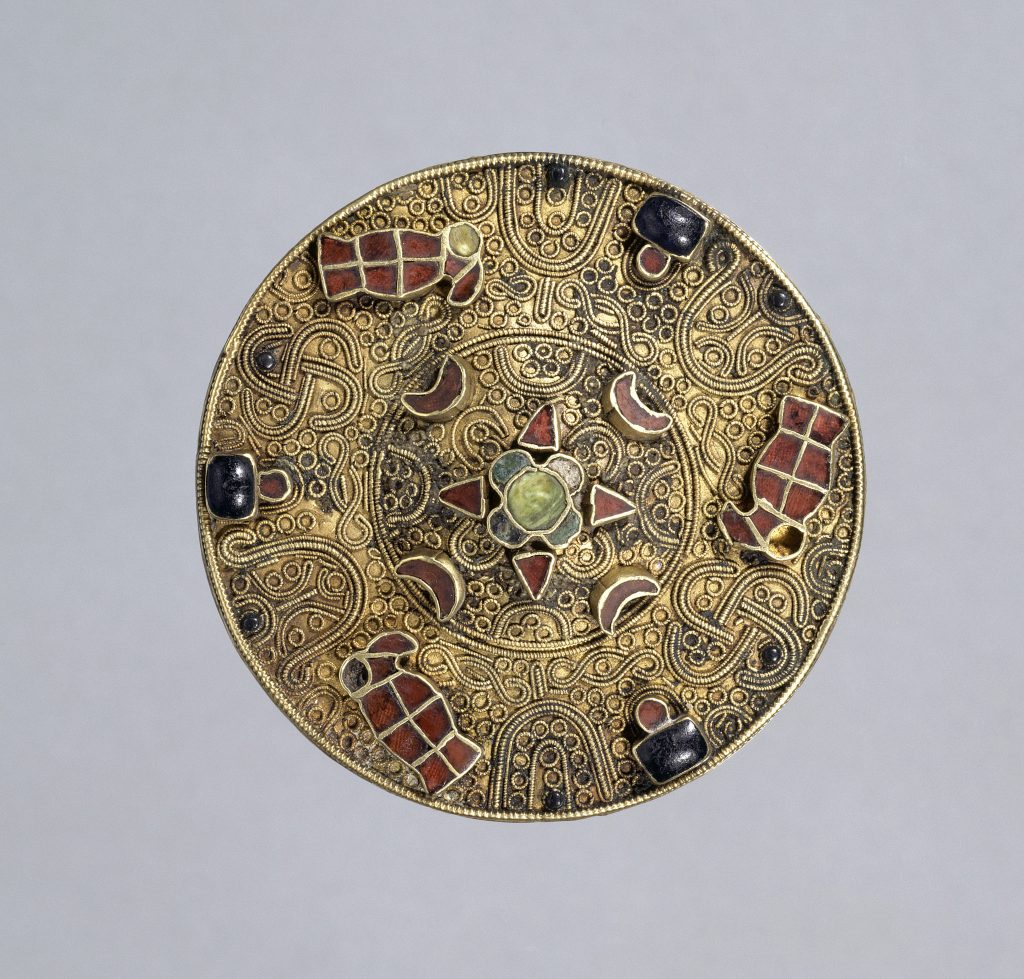
Fibule circulaire. VIIe siècle. Bronze, grenats, or, argent et verre. Diamètre: 6,1 cm. ©Rmn-Grand Palais (musée d’Archéologie nationale) / Gérard Blot.
Merovingian Times: Three Centuries of Art and Culture will remain at Musée de Cluny in Paris, France until February 13, 2017.
Cover image: Mobilier funéraire de la tombe d’Arégonde. Fin du VIe siècle. ©Rmn-Grand Palais (musée d’Archéologie nationale) / Jean-Gilles Berizzi.
 After having begun her career as director of the Museum of Metz, Mme. Isabelle Bardiès-Fronty is now Chief Conservator at the Musée de Cluny. In change of Antiquity, Merovingian, and Byzantine collections, she is additionally responsible for the museum’s collection of Islamic art. She holds degrees from l’Université de Paris-Sorbonne, l’École du Louvre, and l’École Nationale du Patrimoine. Mme. Bardiès-Fronty is presently the director of preparatory classes for the National Heritage Institute (INP de l’Ecole du Louvre) in Paris, France.
After having begun her career as director of the Museum of Metz, Mme. Isabelle Bardiès-Fronty is now Chief Conservator at the Musée de Cluny. In change of Antiquity, Merovingian, and Byzantine collections, she is additionally responsible for the museum’s collection of Islamic art. She holds degrees from l’Université de Paris-Sorbonne, l’École du Louvre, and l’École Nationale du Patrimoine. Mme. Bardiès-Fronty is presently the director of preparatory classes for the National Heritage Institute (INP de l’Ecole du Louvre) in Paris, France.
All images featured in this interview have been attributed to their respective owners. Images lent to AHE by Musée de Cluny have been done so as a courtesy, and we thank them warmly for their generosity. Additional gratitude is extended to Mme. Aline Damoiseau, Press Representative at the Musée de Cluny, for helping facilitate this piece. Interview edited by James Blake Wiener for AHE. Unauthorized reproduction is strictly prohibited. All rights reserved. © AHE 2017. Please contact us for rights to republication.